If I add any kind of UIDynamicBehavior to my views, it completely breaks things when the device is rotated. Here's what it is in portrait (displaying correctly):

And here it is in landscape, all broke:
I don't believe it's an autolayout issue because if I remove the calls to add the UIDynamicBehavior it works fine with no autolayout problems. No autolayout errors are ever thrown either. Here's the code:
@interface SWViewController () {
UICollisionBehavior *coll;
UIDynamicAnimator *dynamicAnimator;
}
@implementation SWViewController
- (void)viewDidLoad {
[super viewDidLoad];
dynamicAnimator = [[UIDynamicAnimator alloc] initWithReferenceView:self.view];
}
- (void)viewDidAppear:(BOOL)animated {
[super viewDidAppear:animated];
[self setupCollisions]; // commenting this out fixes the layout
}
- (void)setupCollisions {
NSArray *dynamicViews = @[greenView];
coll = [[UICollisionBehavior alloc] initWithItems:dynamicViews];
CGFloat topBound = CGRectGetMinY(greenView.frame);
[coll addBoundaryWithIdentifier:@"top"
fromPoint:CGPointMake(0, h1)
toPoint:CGPointMake(CGRectGetWidth(greenView.frame), h1)];
[dynamicAnimator addBehavior:coll];
}
If I override didRotateFromInterfaceOrientation I can see that the top boundary of greenView doesn't follow what autolayout says it should (again, removing the call to setupCollisions fixes this).
The autolayout boundaries on greenView are:
height = 200
trailing space to Superview = 0
leading space to Superview = 0
bottom space to Superview = 0